
Length: Important Anthropometric Marker for Retinopathy of Prematurity (ROP) Requiring Treatment of Very Low Birth Weight (VLBW) Infants in Neonatal Intensive Care Unit (NICU)
2Department of Pediatrics, Seoul national university children’s hospital, South Korea
Background: Low gestational age (GA) and birth weight (BW) were reported in many studies as an important risk factor of retinopathy of prematurity (ROP) requiring treatment, but studies on the relationship between birth length (BL) and ROP requiring treatment are rare.
Objective: To investigate how the intrauterine and postnatal weight and length growth affected the risk of ROP requiring treatment
Methods: Among very low birth weight (VLBW) infants registered in Korean Neonatal Network (KNN) centers from January 2013 to December 2016, 2634 infants with gestational age between 24 to 28 weeks were included in the study. According to the intergrowth 21st growth standards, 4 groups were defined: Group SGA(W, L):birth weight (BW)
Result: Group SGA (L) had a higher odds ratio of incidence of ROP requiring treatment than Group SGA (W, L) in infants with GA above 26 weeks, when compared to AGA. In infants with BW or BL<10%, the EUGR of length was statistically significant, but EGUR of weight was not.
Conclusion: Short birth length may be an important risk factor for ROP requiring treatment in preterm infants and postnatal length growth was also associated with ROP risk in SGA preterm infants. Further study is needed to understand the physiologic and clinical significance of linear growth of extremely preterm infants.
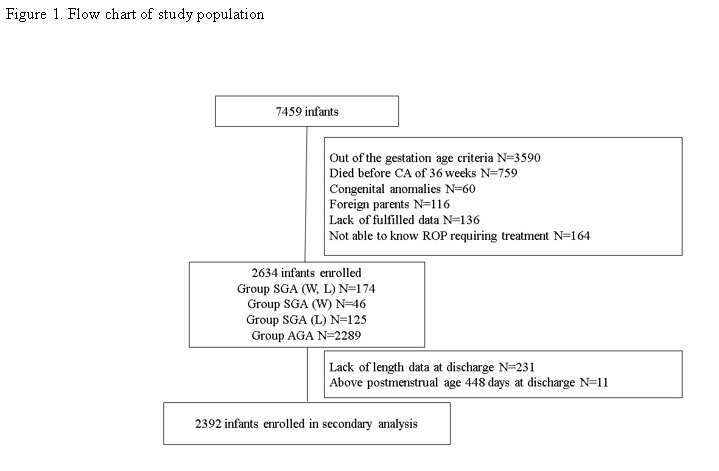
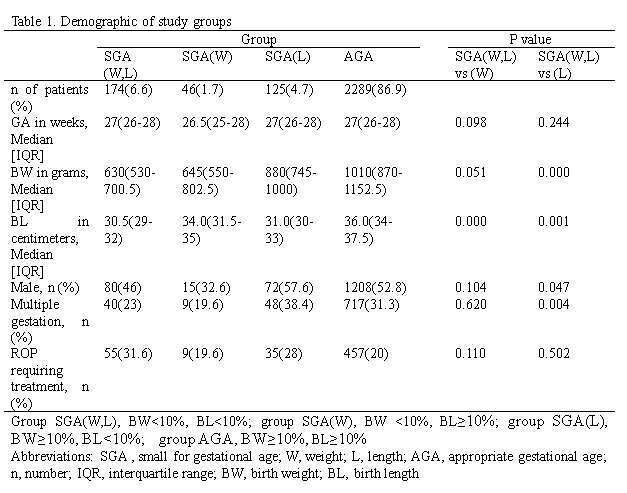
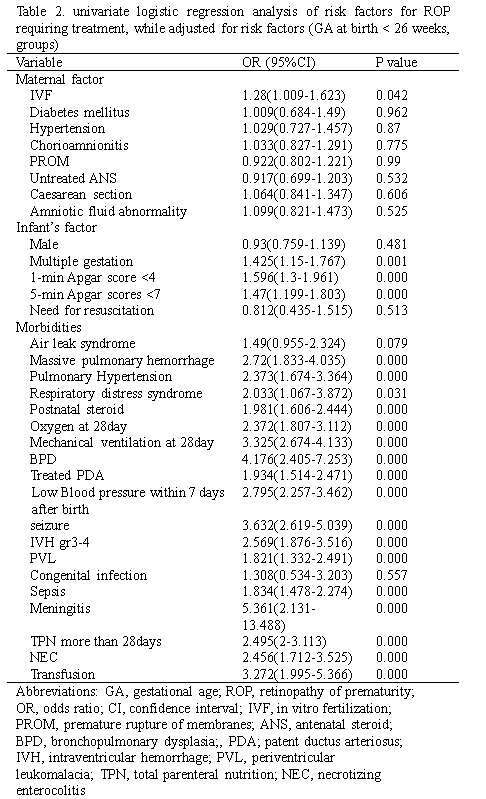
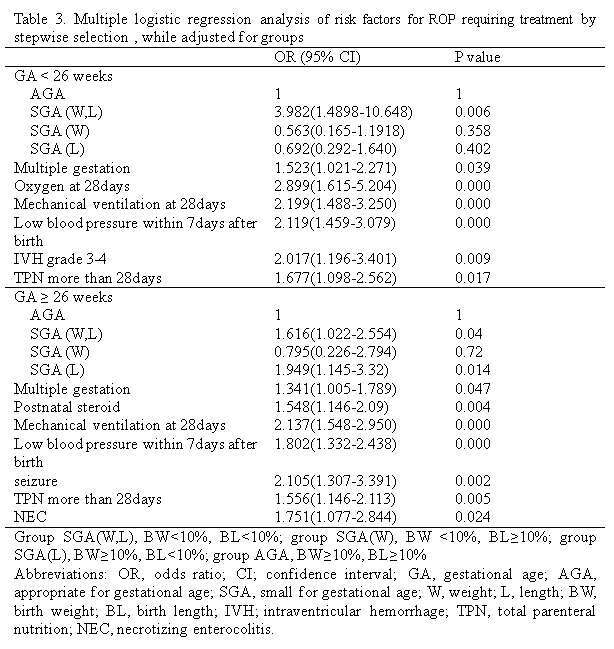
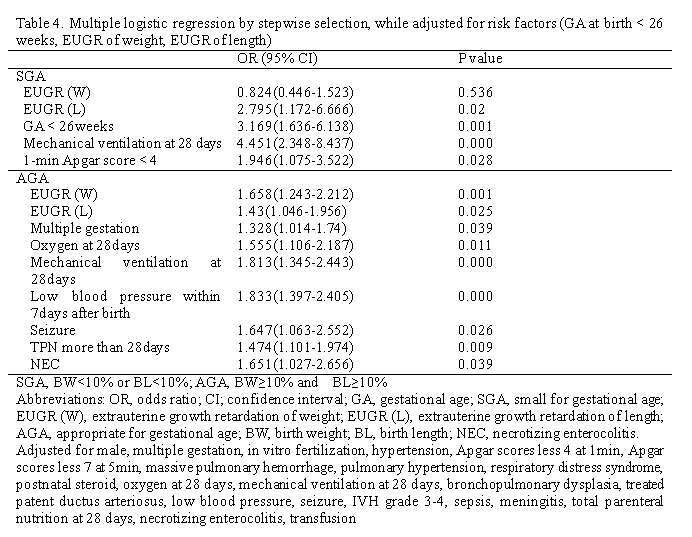
Powered by Eventact EMS